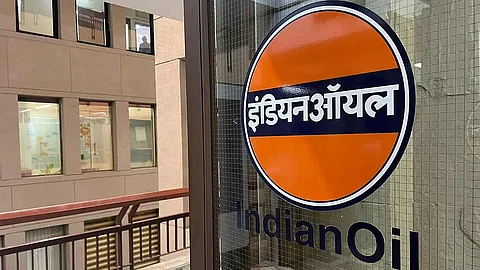
- News Updates
- PSU Watch
- Defence News
- Policy Watch
- हिन्दी न्यूज़
- Jobs Watch
- States News
- Event News

New Delhi: Indian Oil Corporation (IOC) on Thursday reported a sequential drop in earnings for the April–June quarter of FY26 as a sharp fall in gross refining margins (GRMs) weighed on profitability, though stronger marketing performance and higher sales volumes offered partial relief.
On a consolidated basis, IOC’s net profit came in at Rs 6,808.12 crore, down 18.6 percent from Rs 8,367.63 crore in Q4 FY25, but 82.9 percent higher than Rs 3,722.63 crore in Q1 FY25. Standalone profit fell 21.7 percent sequentially to Rs 5,688.60 crore from Rs 7,264.85 crore, more than doubling from Rs 2,643.18 crore a year ago.
The decline was primarily driven by weaker refining economics. Average GRM in Q1 FY26 dropped to USD 2.15 per barrel from USD 6.39 per barrel in Q1 FY25, with the core GRM — adjusted for inventory gains/losses — at USD 6.91 per barrel. The company cited softer global product cracks and an unfavourable crude/product price spread as key drags on refinery margins.
Consolidated revenue from operations edged up 0.22 percent sequentially to Rs 2,21,849.02 crore, from Rs 2,21,360.24 crore in Q1 FY25. On a standalone basis, revenue rose to Rs 2,18,607.70 crore from Rs 2,15,988.76 crore a year earlier.
Despite refining pressures, IOC benefited from healthy marketing margins and higher sales volumes. Inland sales in Q1 FY26 rose to 22.397 MMT, with diesel at 10.095 MMT, petrol at 4.186 MMT, and LPG at 3.664 MMT. Petroleum product exports stood at 1.323 MMT.
Marketing segment results were also supported by growth in premium fuel and lubricant sales, and the continued expansion of IOC’s retail footprint. The company added new fuel stations and strengthened its digital customer engagement platforms during the quarter.
The petroleum products segment remained the mainstay, generating Rs 2,08,356.50 crore in revenue, up from Rs 2,06,132.19 crore in Q4 FY25. The petrochemicals segment posted a marginal loss, while gas operations delivered a modest profit. Other businesses, including renewables and specialised industrial projects, saw mixed performance.
Refinery throughput increased to 18.7 MMT with capacity utilisation at 106.7 percent, compared with 18.5 MMT and 107.1 percent in the previous quarter. Distillate yield was steady at 80.1 percent, while fuel and loss remained at 8.5 percent.
Consolidated operating margin eased to 4.61 percent in Q1 from 4.96 percent in Q4 FY25, but improved from 2.91 percent a year earlier. Net profit margin slipped to 3.07 percent from 3.78 percent sequentially.
IOC reported a cumulative net negative LPG buffer of Rs 23,644.98 crore as of June 30, 2025. The Union Cabinet has approved Rs 30,000 crore compensation for the three PSU OMCs, which is expected to partly offset the accumulated losses.
Finance costs remained elevated at Rs 2,070.05 crore on the consolidated level, reflecting continued borrowings to fund working capital and capex. However, the debt–equity ratio improved to 0.65 from 0.75 in March 2025, aided by profit retention and repayment of high-cost debt. Net worth rose to Rs 1,93,901.77 crore from Rs 1,86,487.32 crore at end-March.
While marketing strength has cushioned Q1 earnings, IOC remains exposed to volatility in crude oil prices, product cracks, and currency fluctuations. With GRMs under pressure and global demand patterns uncertain, the company’s ability to sustain margins will hinge on optimising its crude sourcing, refining configuration, and expanding value-added product lines.
(PSU Watch– India's Business News centre that places the spotlight on PSUs, Bureaucracy, Defence and Public Policy is now on Google News. Click here to follow. Also, join PSU Watch Channel in your Telegram. You may also follow us on Twitter here and stay updated.)
